INSIDE THE EUROPUNK EXHIBITION. THE PUNK CULTURAL VISION IN EUROPE DURING THE YEAR 1976-80 | FRENCH ACADEMY IN ROME, VILLA MEDICI
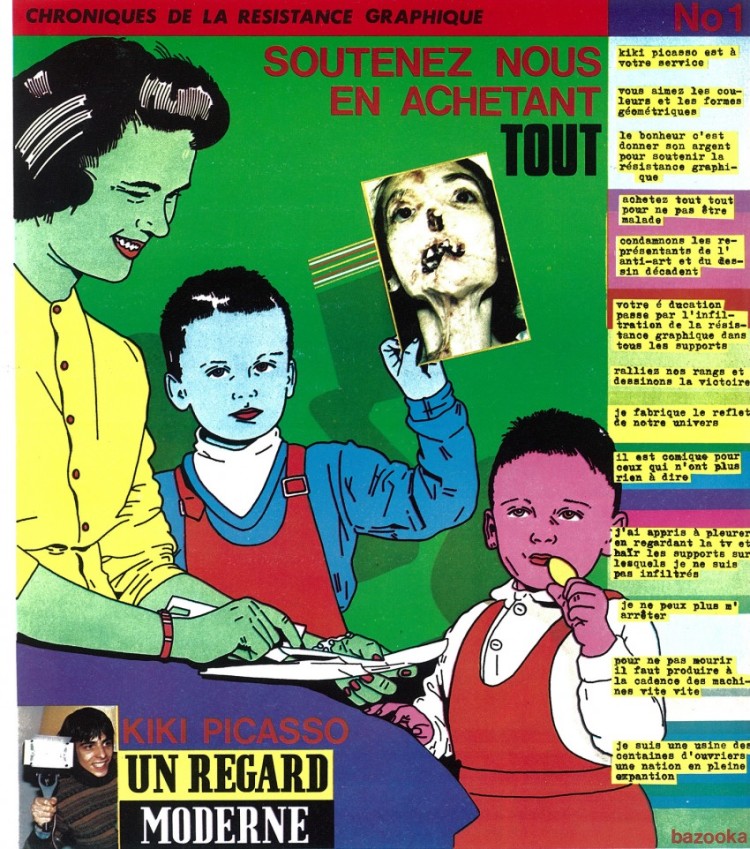
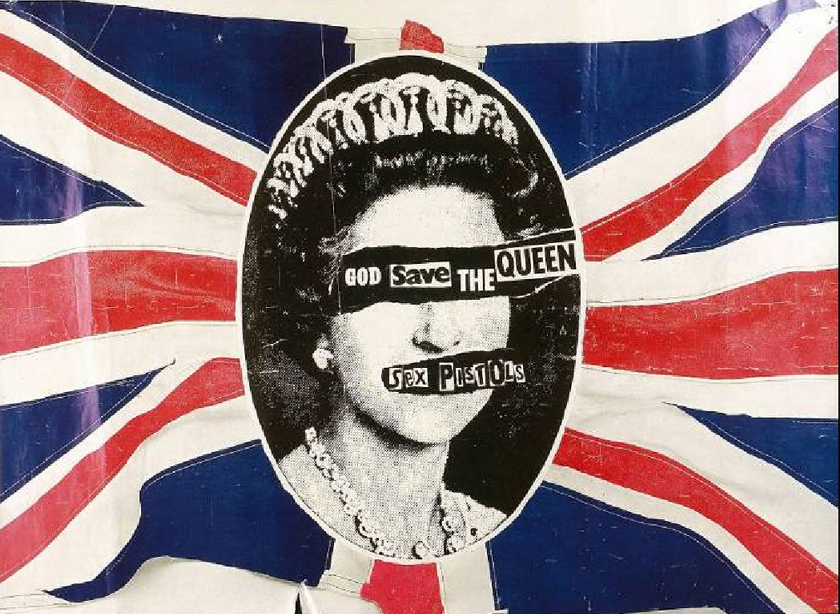
EUROPUNK
The visual culture of punk in Europe, 1976-80
Preview
Thursday 20 January 2011, 6 pm
Open to the public
From Friday, January, 21 2011 to Sunday, March, 20 2011
French Academy in Rome – Villa Medici
Rome, Viale Trinità dei Monti, 1
www.villamedici.it
Text by Vittoria Biasi – All Texts are 1F mediaproject copyright. All Rights Reserved.
Inside the EUROPUNK Exhibition. The Punk cultural vision in Europe during the years 1976-1980.
Eric de Chassey director of the Academy of France at Rome proposes a trip into the artistic movements during the seventies which brought through alternative, transversal and out of a tradition languages, a tingle of vitality among countries like United Kingdom, France, Germany, Switzerland, Italy and Netherlands. The exhibition begins with the Sex Pistols television debut during 1976 first official show date for the Punk movement through the programme So It Goes for the Granada Television of Manchester –– and finishes with the first passage on BBC of Joy Division during 1979. The exhibition is realized with the cooperation of Fabrice Stroun independent curator associated to the young Museum MAMCO of Geneva which will welcome the exhibition. The project, unusual in the exhibition scenery, is a chance to expand and revise on subjects, to remind figures and events which connoted that period introducing the characters and the anarchism that have proliferated some derivative cultures such as the Psychobilly* who applied plasters to their fingers to play contrabass.
The Punk culture is seen onto the ideological background of the objections and of the new avant-garde artistic movements, what they have not realized or not expressed or even deceived. Peter Bürger and Catherine Millet point at the radical concept of the historical avant-garde in pursuit of shifting the artistic experiences in the life of every days. Their action is regained by the avant-garde artists which don’t develop the interaction of the art with the new audience except for Yves Kleine and Piero Manzoni. The judgement of historians that have celebrated the object is extended to the Pop Art and the Nouveau Realisme movements. The emerging mass cultures of the modernity which are reconfiguring new systems, are even farther away of the fundamental problems attaining the creativeness in the conceptual art. The years after the war witness the reaffirmation of nationalist ideologies, of traditional identities translated by Fluxus**into a short-circuit, into a cataclysm of new creative experiences. From the awareness of a contrast between the ideology of the creative act and the reality of some systems, from a desire to express the genuineness of a social thought, an artistic gesture, an elitist genuine culture rush in, marginal aspect in connection with the sorrowful official character. The colours, the look, the black, the studs, the icons, the piercings, the pins, the make-up, (Punk fashion which some stylist will take inspiration from) are the coordinates of a new culture by which the groups appeal to the public hymning I’m an Antichrist, I’m an anarchist!
The Punk messages are aggressive in refusing the social patterns and are a radical expression of problems and system unevenness: no dog’s body!!! Kill the poor is the challenging title of the Hardcore Group’s song coming from San Francisco, Dead Kennedys during 1980.
Eric de Chassey and Fabrice Stroun put together in exhibition more than fivehundredfiftyfive handmade products: clothing, fanzines, posters, portraits, album cover, film, drawings, collages which silently have inspired and are inspiring even today the contemporary languages.
Introducing the catalogue, the Director points out the lack of attention between the marginality of some visual creativities and the worldwide fame for the music of Punk Groups which have proposed with remarkable originality an artistic performance to break with any concept of fashion, style, tradition. The musical history of Punk Groups has been in the glare all over Europe and United States through literature and Internet. The images divulged by different media, fit in the exhibition projects for the strong visual impact, have been considered as an art somehow different. The Punk music has been able to negotiate the traditional language barriers and spread its message out and the active and open people welcomed the emergent expressions during those years. Villa Medici underlines the Punk merits as a form of art through the objects to be seen and understood, and the Punk culture can be considered a primary form of art interconnecting larger creative forms among visual art, music and performance for its lust to research and for its vitality.
The curators reorganized the period into eight sections, pointing out the events, the production and the characters that founded the groups. The Sex Pistols, Bazooka, D.I.Y., N.P.A., A., Gap, WTF, NW, are the expressions of a movement determined to make a clean sweep of the past in order to get the cultural reform relieved. The famous manifesto realized by Jamie Reid is shown for the Sex Pistols with the face of the Queen crossed by the title of the song God Save The Queen. The culture Punk rebellion takes on a painstaking global style everywhere in the world, of correspondence between the appearance and the being, between the being and the result. The history of the Sex Pistols is an example whose imagine has been made with care by recently deceased Malcom Mc Laren and by his wife Vivienne Westwood. In France the Bazooka have had a different course. The group originated from Parisian Fine Arts students which loved the comic-strip and started their contribution with “Liberation”. The Group is constituted by Olivia Clavel, Lulu Larsen, Kiki and Loulou Picasso, Bernard Vidal and later the Ti5-Dur and Jean Rouzaud. After 1980 the members keep working individually. The third section of the exhibition is dedicated to the Group D.I.Y. and their peremptory “do it yourself”, with the creation of images doomed to a wide diffusion without a traditional format of communication.
The Punk phenomenon has been musically historicized by Jerry Goossens a member of the Hollander punk movement and by Jon Savage who composed the well-known England’s Dreaming: both offer their contribute to the exhibition catalogue. According to the curators the Punk project is reflected in the four artists simultaneous nature of their site-specific works: Francis Baudevin, Stéfane Dafflon, Philippe Decrauzat and Scott King, the graphic designer, authors of an abstract and geometric painting.
Vittoria Biasi
Curator and Art Critic
Translated by Salvatore Rollo – at salvatore_rollo@fastwebnet.it
(*) It is a musical genus mixing different types of Punk Rock, Rockabilly and others. It is characterized by texts which deal with horror, violence, sex and similar considered taboo. The bass guitar which is typical for rock orchestration is often replaced by the contrabass (Wikipedia)
(**) It is a group clearly Dadaist which is born in 1961 and performed in Germany although
several American artists have joined it (Wikipedia).
THE CATALOGUE
The exhibition EUROPUNK will be accompanied by a catalogue published in three languages (French, Italian and English) by Drago, with essays by Éric de Chassey, Jon Savage, and Jerry Goossens, complemented by facsimiles of fanzines and hundreds of images.
INFORMATION
VISITOR INFORMATION:+ 39 06/67 61 1 – www.villamedici.it
Opening hours: Tuesday to Sunday 10.45 am – 1 pm / 2 pm – 7pm / Thursday until 11 pm
Closed: Monday
Admission free for 10s and under
French Academy in Rome – Villa Medici – Viale Trinità dei Monti, 1 – 00187 Rome
Underground: A Spagna / Bus: 117-119
PRESS OFFICE
Ludovica Solari
Tel: +39 06 67 61 291 – Fax: +39 06 67 61 243 – e-mail: stampa@villamedici.it
Under the patronage of France’s Ministry of Culture and Communications
Testo di Vittoria Biasi
Con la mostra EUROPUNK. La cultura visiva punk in Europa 1976-1980 Éric de Chassey, direttore dell’Accademia di Francia a Roma, propone un percorso tra i movimenti artistici degli anni ’70, che hanno portato un fremito di vitalità utilizzando linguaggi alternativi, trasversali e fuori dagli schemi tradizionali nei paesi europei come Regno Unito, Francia, Germania, Svizzera, Italia, Olanda. La mostra inizia con il primo debutto televisivo dei Sex Pistols nel 1976 – data ufficiale di apparizione del movimento punk – nel programma So It Goes, per la Granada Television di Manchester, e si conclude con il primo passaggio dei Joy Division sulla BBC nel 1979. L’esposizioner è realizzata con la collaborazione di Fabrice Stroun, curatore indipendente associato al giovane museo MAMCO di Ginevra, che ospiterà la mostra. Il progetto, insolito nel panorama espositivo, è un’occasione per approfondire, rileggere e rammentare eventi e personaggi che hanno connotato un periodo introducendo caratteri e anarchie che hanno prolificato culture derivate come Psycobilly, che si incerottavano le dita per suonare il contrabbasso.
La cultura punk si colloca sullo sfondo ideologico delle contestazioni e delle neo avanguardie artistiche, di quanto queste non hanno realizzato o non espresso o tradito. Peter Bürger e Catherine Millet indicano la concezione radicale delle avanguardie storiche nel tentativo di spostare le pratiche artistiche all’interno della vita quotidiana. La loro azione è ripresa dagli artisti delle neoavanguardie, che, ad eccezioni di artisti Yves Kleine e Piero Manzoni, non sviluppano l’ interrelazione dell’arte con il nuovo pubblico. Il giudizio degli storici è esteso ai movimenti della Pop Art e del Nouveau Realisme, che hanno celebrato l’oggetto. Le emergenti culture di massa della modernità, che stanno riconfigurando nuovi sistemi, sono ancor più distanti dalle problematiche creative dell’arte concettuale. Gli anni del dopoguerra vedono riaffermarsi ideologie nazionaliste, d’identità tradizionali tradotte da Fluxus in un cortocircuito, in un cataclisma di nuove esperienze creative. Dalla presa di coscienza di un contrasto tra l’ideologia dell’atto creativo e la realtà di alcuni sistemi, dal desiderio di esprimere con autenticità un pensiero sociale, un gesto artistico, irrompe una cultura genuina d’elite, marginale alla triste ufficialità. I colori, il look, il nero, le borchie, le icone, i piercing, le spille, il maquillage, (Punk Fashion a cui si ispireranno alcuni stilisti) sono le coordinate di una nuova cultura con cui i gruppi si rivolgono al pubblico inneggiando I’m an anthicryst, I’m an anarchyst!. I messaggi punk, espressione radicale delle problematiche e delle disparità dei sistemi, sono aggressivi nel rifiuto di paradgmi sociali, No Dog’s body!!! Kill the Poor è il titolo provocatorio della canzone del gruppo hardcore punk statunitense Dead Kennedys del 1980.
Eric de Chassey e Fabrice Stroun riuniscono in mostra più di cinquecentocinquanta manufatti, tra abiti, fanzine, poster, ritratti, copertine di album, film, disegni, collage, che in silenzio hanno ispirato continuato ad ispirare i linguaggi contemporanei. Nell’introduzione al catalogo, il Direttore rileva lo squilibrio di attenzione tra la marginalità di alcune creatività visive e la diffusa notorietà della musica dei gruppi punk che con spiccata originalità hanno proposto uno spettacolo artistico di rottura con qualunque concetto di moda, di stile, di tradizione. La storia musicale dei gruppi punk ha avuto attenzione in Europa e negli Stati Uniti con pubblicazioni e siti internet. Le immagini pubblicate nei vari testi, entrate nei progetti espositivi per il forte impatto visivo, sono sempre state considerate come arte altra. La musica punk è riuscita a valicare delle barriere dei linguaggi tradizionali e ha diffuso il suo messaggio, accolto dal pubblico più attivo e aperto alle espressività emergenti di quegli anni. Per la vitalità, il desiderio di ricercare forme creative più ampie tra arte visiva, musica e performance, la cultura punk può essere considerata una prima forma artistica d’interconnessione e Villa Medici sottolinea il valore dei punk come forma d’arte, con oggetti da vedere e capire.
I curatori hanno ricostruito il periodo in otto sezioni, mettendo in rilievo gli eventi, la produzione e i personaggi che fondato i gruppi. I Sex Pistlos, Bazooka, D.I.Y., NPA, A, Gap, WTF, NW sono le espressioni di un movimento che voleva far tabula rasa del passato per far respirare il rinnovamento culturale. Per i Sex Pistols è esposto il manifesto realizzato da Jamie Reid, con celebre volto della regina attraversato dal titolo della canzone God Save the Queen. La ribellione della cultura punk assume in ogni paese un accurato stile totale, di corrispondenza tra l’apparire e l’essere, tra l’essere e il prodotto. Un esempio è la storia dei Sex Pistols, la cui immagine è stata curata da Malcolm McLaren, da poco deceduto, e dalla moglie Vivienne Westwood. I Bazooka in Francia hanno avuto un differente percorso. Il gruppo nasce tra gli studenti parigini delle Belle Arti, amanti del fumetto e che iniziano una collaborazione con Libération. Il gruppo è formato da Olivia Clavel, Lulu Larsen, Kiki Picasso, Loulou Picasso, Bernard Vidal cui dopo si aggiungono Ti5-Dur e Jean Rouzaud. Dopo il 1980 i membri continuano a lavorare individualmente. La terza sezione della mostra è dedicata al gruppo D.I.Y. con il loro imperativo “do it yourself, con la creazione di immagini destinate ad ampia diffusione senza alcun format di comunicazione tradizionale.
Il fenomeno punk è stato musicalmente storicizzato da Jon Savage, autore del noto England’s Dreaming e da Jerry Goossens, membro del movimento punk olandese: entrambi offrono il loro contributo al catalogo della mostra. Il progetto punk, per i curatori, si riflette nella contemporaneità con le opere site specific di quattro artisti: Francis Baudevin, Stéphane Dafflon, Philippe Decrauzat, autori di una pittura geometrica astratta, e il graphic designer Scott King.
Vittoria Biasi

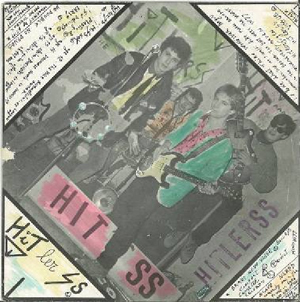
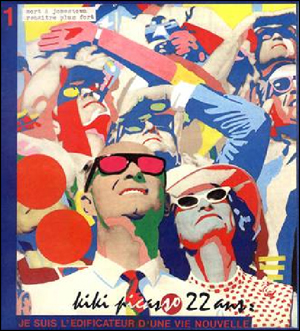
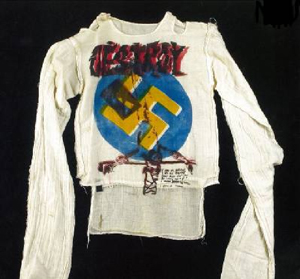

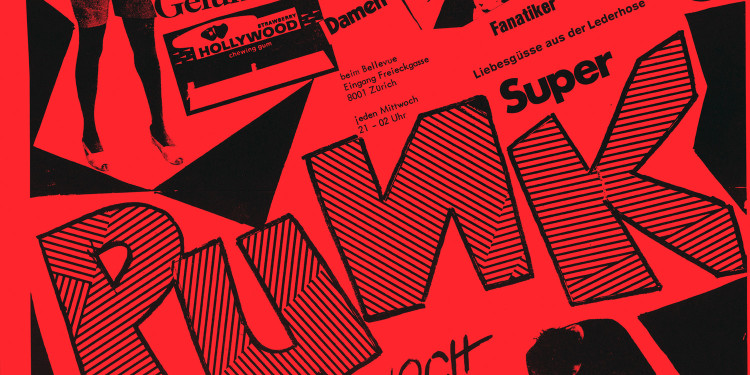
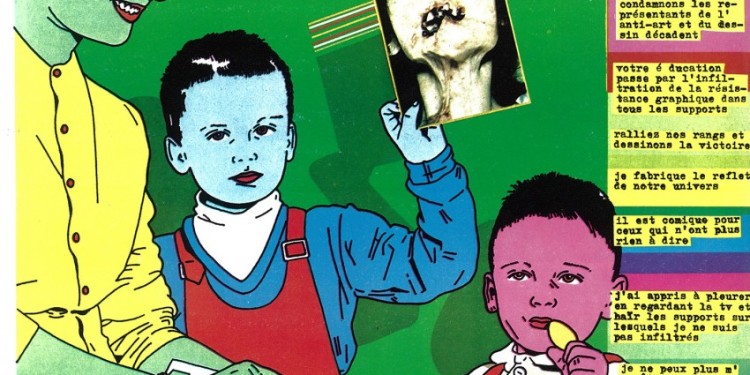
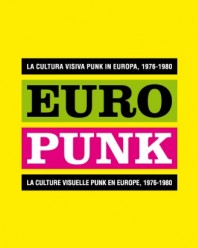
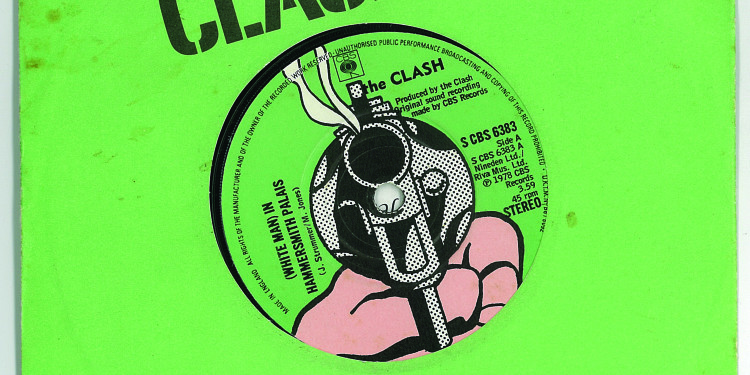
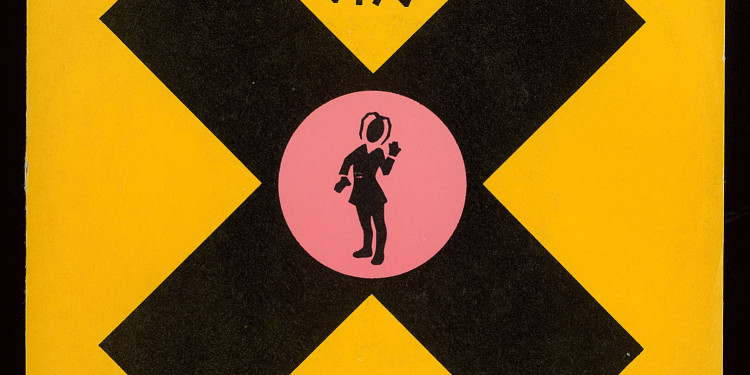
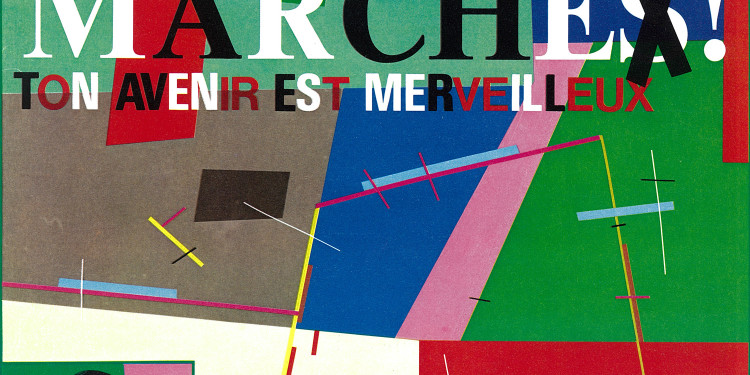
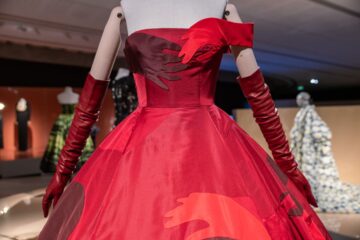
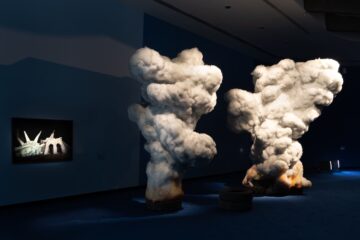



No Comment